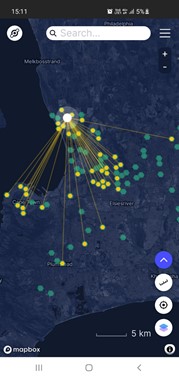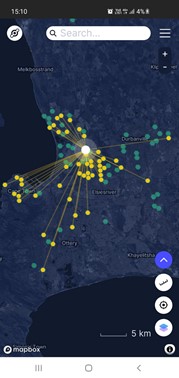Helium Crypto Mining – Increase coverage using the POYNTING Omni Antenna

Inteto Connect are distributors of POYNTING Antennas’ products in South Africa and African markets. In the article below they explain how they are using POYNTING’s OMNI-292 Antennas to increase coverage for their Helium Crypto Mining Customers:
Helium Crypto Mining and the native token of the Helium blockchain ($HNT) has been in existence since 2019 and is known as the people’s network. Helium is a blockchain network designed to provide wireless coverage to the masses. This cryptocurrency has slowly started to get some foothold in
South Africa.
The Helium Blockchain is based on a new, novel work algorithm called Proof of Coverage, and rewards miners in $HNT, the native token of the Helium blockchain. The following is an extract from an article written by Will Norris on GitConnected.
How Does Helium Work?
Helium uses a new work algorithm called Proof of Coverage (PoC), and rewards miners in $HNT — Helium coin like ETH is to Ethereum — for using radio waves to validate those hotspots are providing wireless coverage to devices. Much like Ethereum uses graphics cards to crunch cryptographic hash codes that provide the proof of work needed to validate transactions, Helium miners verify that wireless hotspots aren’t lying about their service by using radio waves to “interrogate” hotspots about their activity.
Radio-Frequency and Proof of Coverage
Proof of Coverage only works because of several key properties of radio-frequency (RF) that allow miners to produce proofs that meaningfully prove the legitimacy of hotspot activity:
- RF travels at the speed of light, which means it has effectively zero latency.
- RF can only travel a limited physical distance.
- The strength of an RF signal can be used to determine how far away it originated.
These three characteristics are fundamental to Proof of Coverage functioning since they allow the blockchain to constantly check if hotspots are working properly via a “Challenge”.



